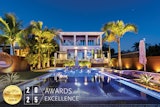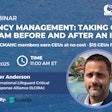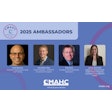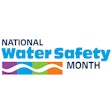There’s no secret that when it comes to government regulation, many in the pool and spa industry are decidedly nonplussed. The widespread perception that government regulators and legislators all too often foist draconian requirements on the aquatic industry stands as a common refrain amongst industry members struggling to comply with today’s mountain of red tape, fees, licenses and regulations.
With that adversarial climate as a backdrop, there is one “code” that represents an attempt to break the mold in that it is aimed entirely at benefiting the industry and its consumers. Adopted by the U.S. Centers for Disease Control in August 2014, the Model Aquatic Health Code exists to establish specific guidelines and standards for the design, construction, operation, maintenance and management of commercial, semi-public and public pools and hot tubs.
The MAHC is unusual among government mandates not only because it was initially developed entirely on industry input and current science — a process that took seven years and involved hundreds of aquatic experts — but also the MAHC is designed to be revised every two years based on input and votes from industry members.
It is a completely voluntary standard created by the industry for the industry.
“States and localities can use the MAHC to write or update existing pool codes to reduce risk for outbreaks, drowning, and pool chemical injuries. And aquatics industry leaders don’t have to wait for a government agency to adopt the MAHC. They can implement key MAHC elements now,” says Michael Beach, associate director for healthy water in the CDC's National Center for Emerging and Zoonotic Infectious Diseases and chief of the Waterborne Disease Prevention Branch.
To promote awareness and adoption of the MAHC, the Council for Model Aquatic Health Code was established as a nonprofit organization with board members drawn from the pool, spa and aquatics industries. Those interested in participating in updating the MAHC must become a CMAHC member, which costs only $40 every two years. Although anyone can propose changes to the MAHC, only CMAHC members can comment and vote on changes.
“If professionals and organizations care about what is in the MAHC, about the MAHC’s future, and want to maximize the opportunities for safe and healthy aquatic experiences for the public, it’s important to take the wise step and join CMAHC,” explains Doug Sackett, executive director of CMAHC. “The CMAHC is unique in that no other organization exists exclusively to advocate, evolve, innovate, promote implementation and organize research in support of the Model Aquatic Health Code.”
The first code update is currently in the works with more than 150 proposed changes. Voting on the changes will take place in Scottsdale, Ariz, October 6 to 7 at the Vote on the Code 2015 Biennial Conference. The event is being held just prior to the World Aquatic Health Conference, an event produced by the National Swimming Pool Foundation, which became the CMAHC’s first Founding Sponsor.
“We often learn to live with pain. Hundreds of pool codes are painful for industry and government. A science-based model code makes business easier and more efficient, regulation administration and influence easier, and the ultimate consumer safer and happier,” says NSPF CEO Thomas Lachocki. “Sponsoring and engaging with CMAHC at any level is a wise investment that benefits society and business.”
Voting on the 2015 MAHC updates will be held open for two weeks following the conference for those unable to attend. For more information about the MAHC Vote on the Code conference and/or becoming a CMAHC member, go to www.cmahc.org.











































